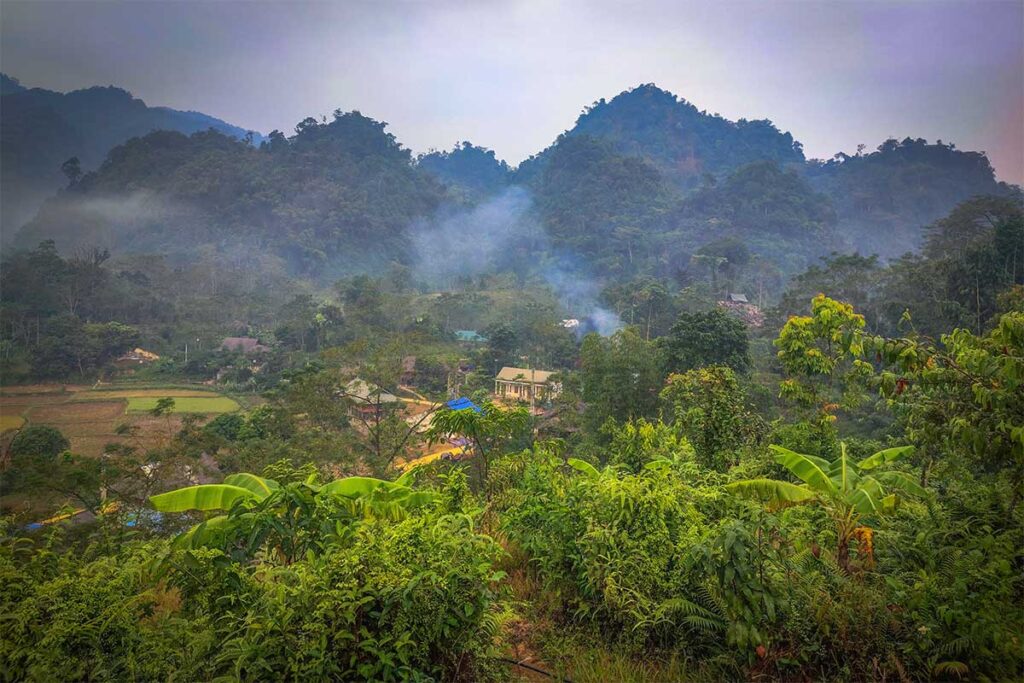What is Van Ho District like?
Van Ho District is a rugged, largely undiscovered area in Son La Province, set between the popular stops of Mai Chau and Moc Chau. While a main road cuts through the district, few travelers take the time to explore its quiet backroads, where places like Chieng Yen offer lush forests, waterfalls, hot springs, and a strong sense of ethnic minority life.
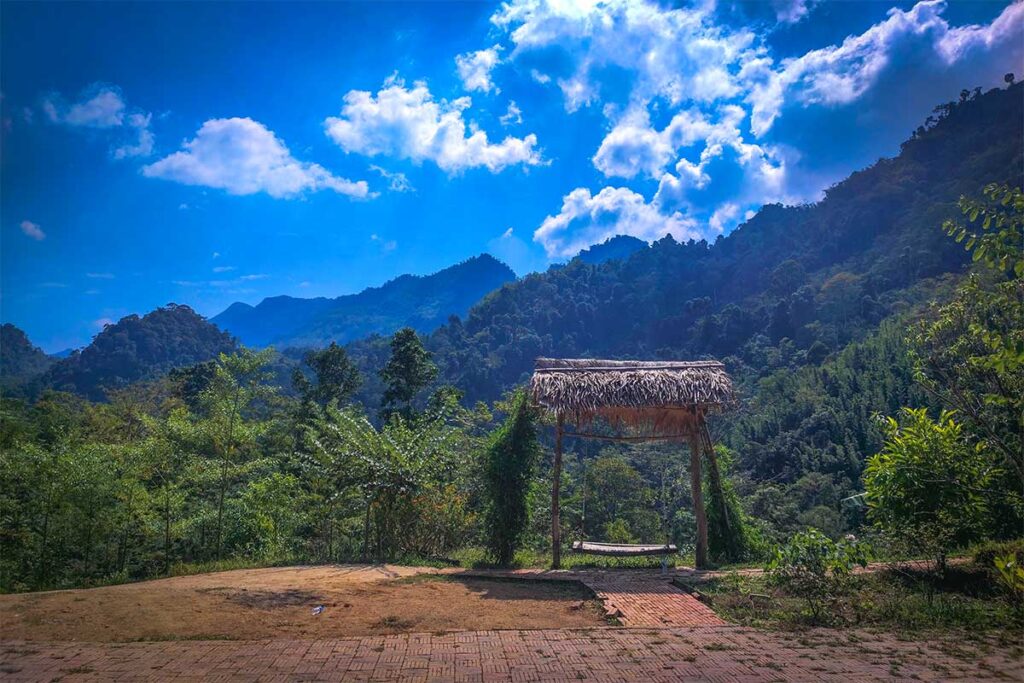
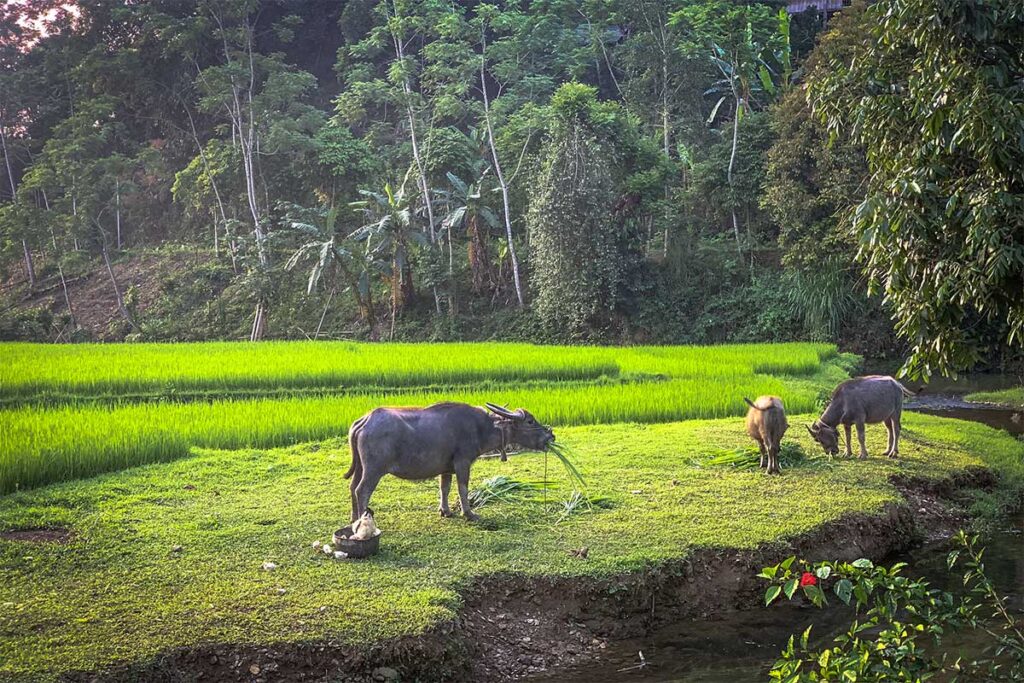
With a cool climate, scattered farms, and remote mountain villages home to Thai, Mong, Muong, and Dao communities, Van Ho feels far from the tourist trail — raw, authentic, and ideal for those seeking a deeper rural experience in northern Vietnam.
Best things to do in Van Ho
Van Ho isn’t packed with tourist attractions, but that’s exactly what makes it special. The real highlights here are the untouched nature, quiet roads, and genuine encounters with ethnic minority culture. Below are the best things to do and places to explore in Van Ho District, including the commune of Chieng Yen.
1. Tat Nang Waterfall (Chieng Yen)
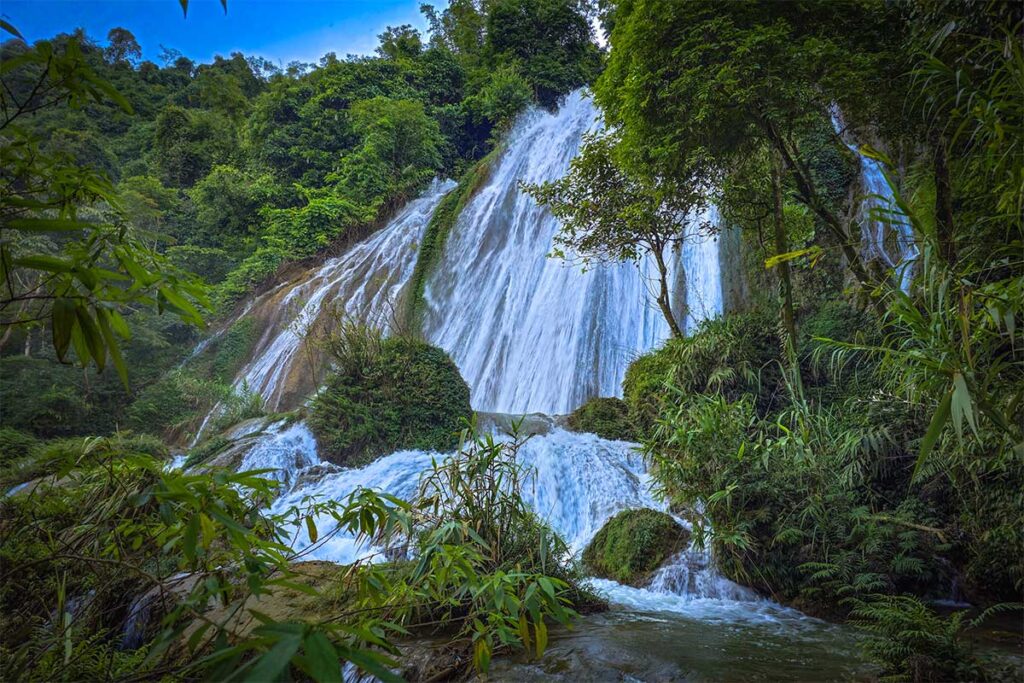
Tat Nang is the most impressive waterfall in Van Ho, plunging roughly 100 meters in three tiers through dense forest. The setting feels wild and untouched, especially if you visit outside weekends and holidays. You can reach the falls by motorbike almost all the way to the base, followed by a short walk.
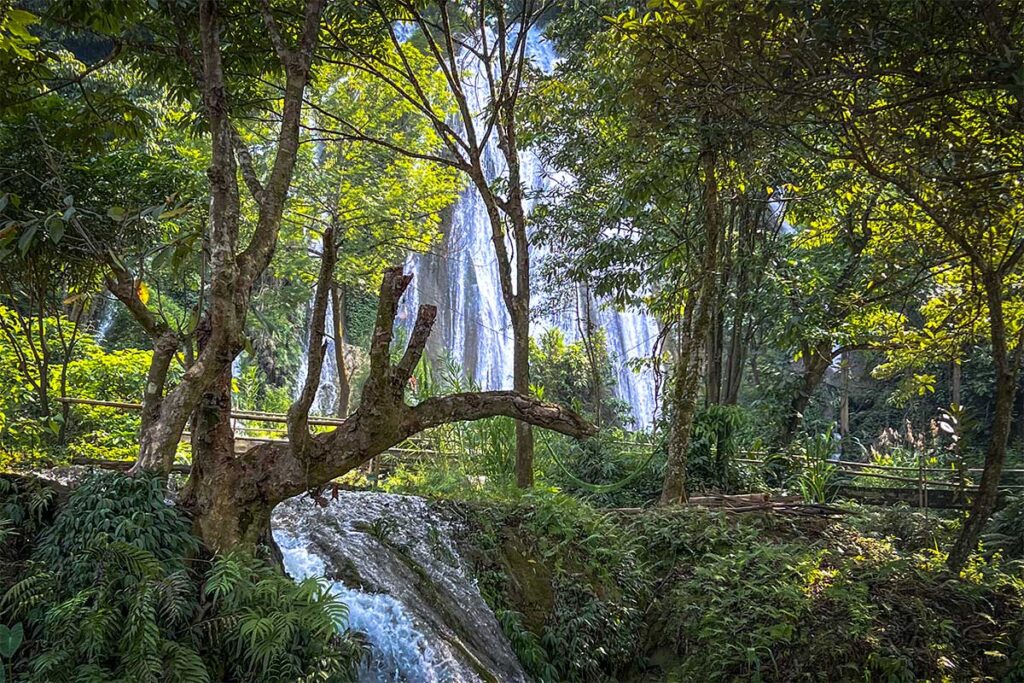
Some bamboo bridges and paths have deteriorated over time, but they’re still passable with care. Expect to spend 20–40 minutes here — longer if you like to explore the smaller cascades nearby or dip into the natural pools. The entrance fee is minimal (around 10,000 VND), and the atmosphere is peaceful. While it’s not fully developed, that’s part of its charm.
2. Chieng Yen Hot Spring (Suoi nuoc nóng Bò Am)
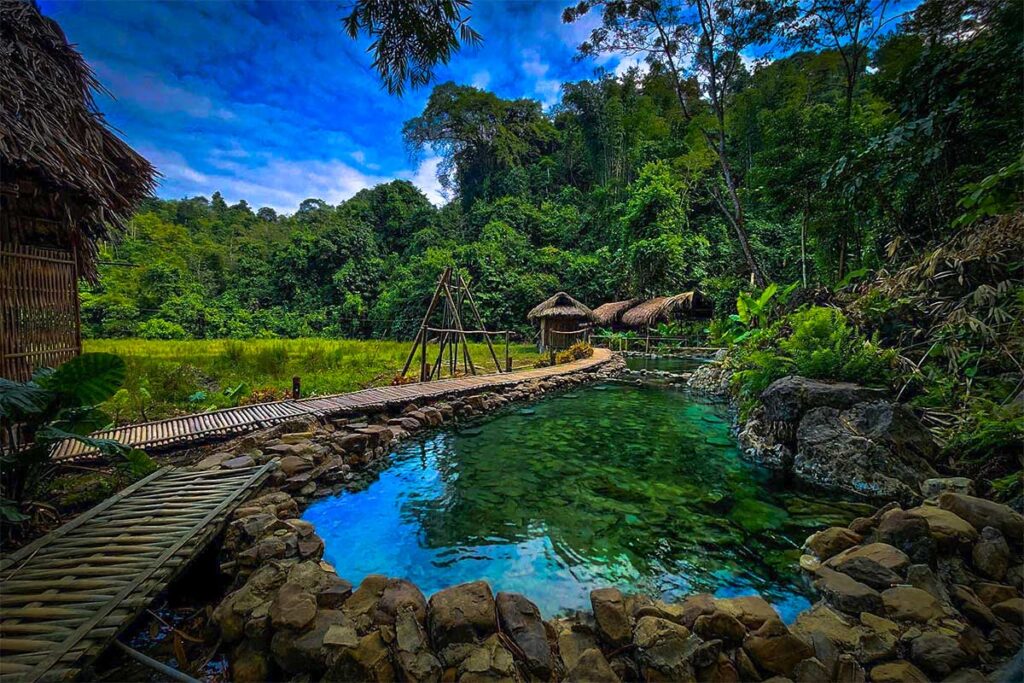
Located at the foot of Bo Ui Mountain, this small natural hot spring is a great stop to relax after a day of riding or hiking. The water is gently warm (around 35–40°C), clean, and surprisingly pleasant to soak in — especially in the cooler months.
Facilities are basic: a few toilets and changing rooms, and the spring itself is quite modest in size. There’s an entrance fee of around 30,000 VND. Don’t expect a full spa experience, but if you arrive early or during a quiet time, you might have the pool to yourself.
3. Buot Village Stream & Fish Pool (Chieng Yen)
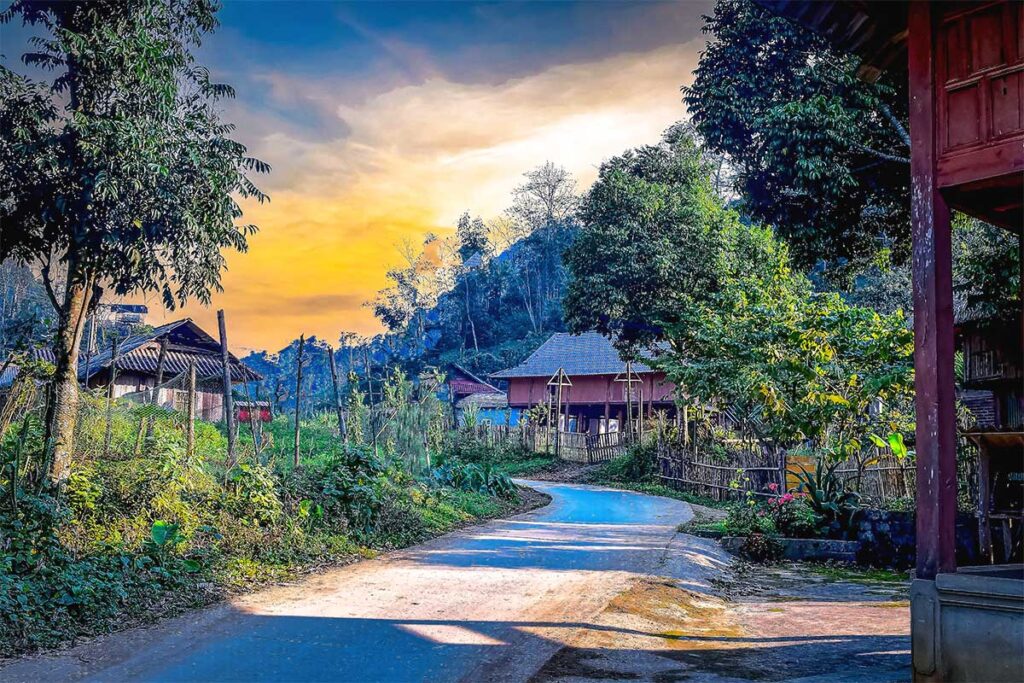
Bướt Village is tucked deep into the countryside, where a clear stream flows through rice paddies and forest edges. This is a quiet, peaceful place — good for swimming, walking, or simply slowing down. The stream is home to a variety of local fish, which are said by locals to have healing properties, though mostly it’s just a calm and scenic place to sit or wade in.
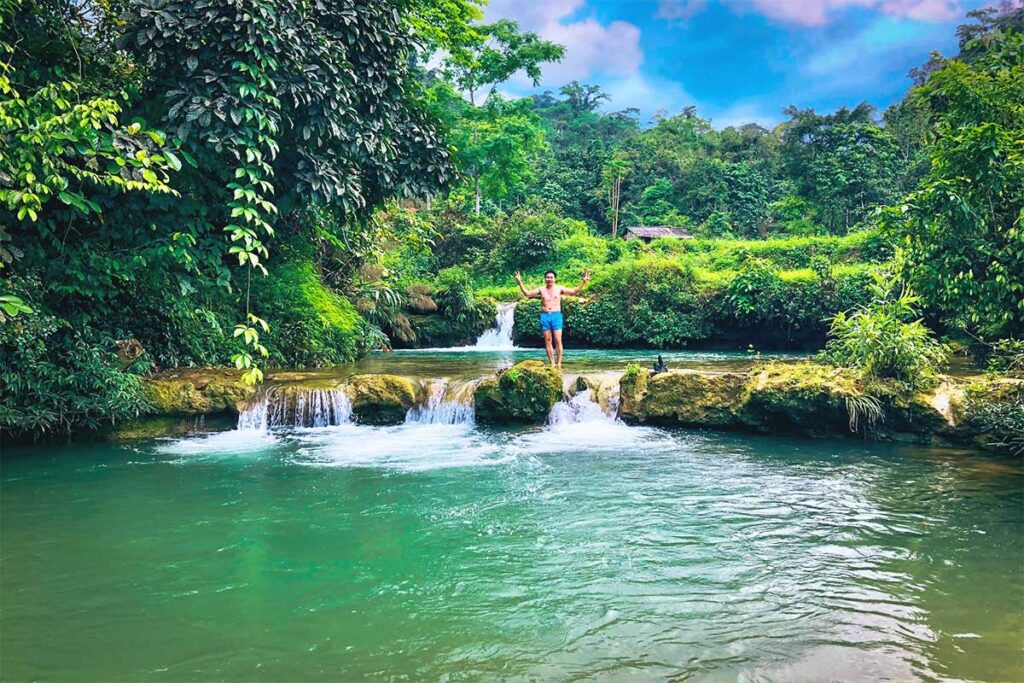
Be aware: there’s little to no mobile signal here, no shops, and only a few scattered homestays. But for travelers looking to disconnect, Bướt offers a real rural escape.
4. Na Bai & Phu Mau Villages
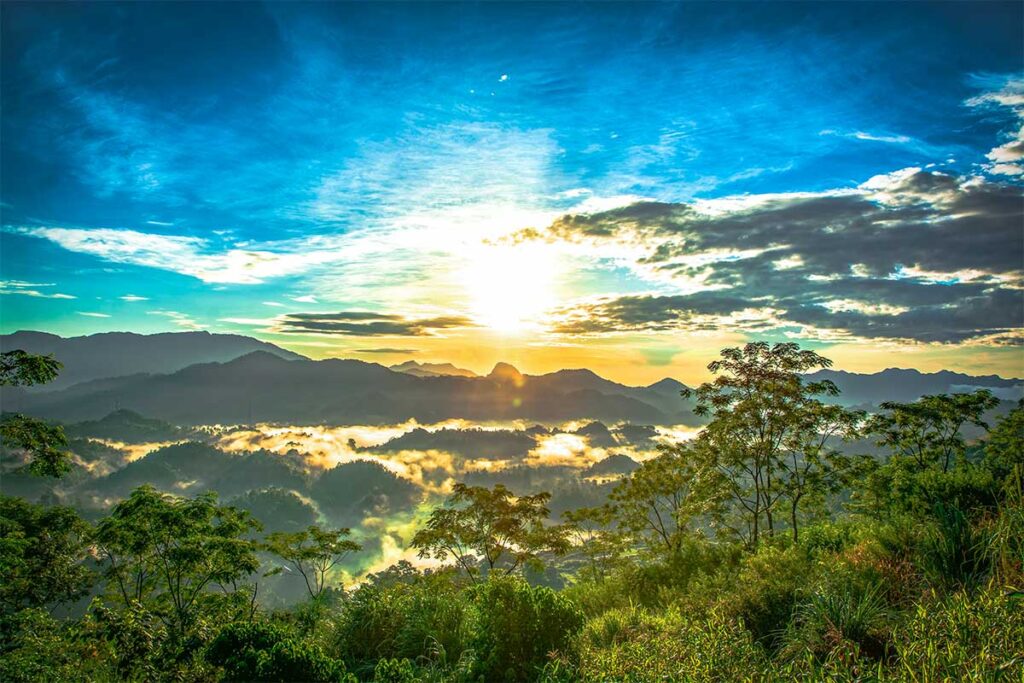
These two villages are central to Van Ho’s community-based tourism efforts. In Na Bai, you’ll find Dao and Muong families living in wooden stilt houses surrounded by hills and tea fields. It’s also a spot for cloud-hunting and camping, popular among domestic travelers.
Phu Mau, by contrast, is a Thai village near the hot spring and waterfall. Here, traditional houses, cultural performances, and home-cooked meals give a deeper sense of local life. Both villages have basic but welcoming homestays and offer a great way to connect with ethnic culture — whether it’s watching a dance, eating sticky rice, or joining farming activities.
5. Mây-Dó Viewpoint (Chieng Yen)
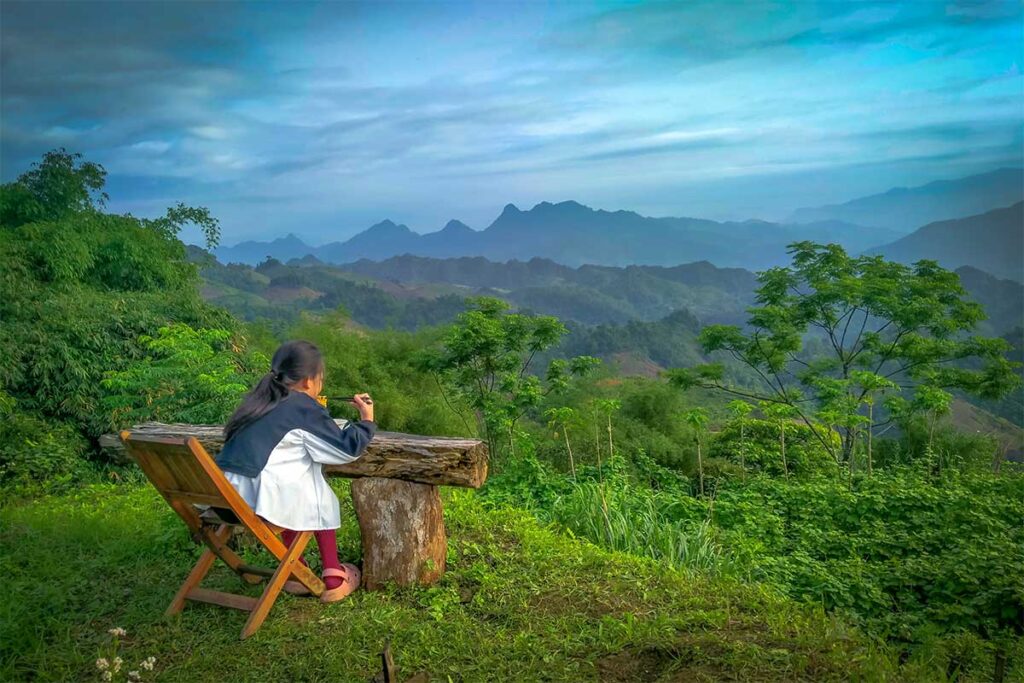
Mây-Dó is a viewpoint and simple stilt-house setup with a swing, scenic mountain views, and the potential for cloud-hunting at sunrise. It’s not a major destination, but a lovely photo stop if you’re in the area. There may be a homestay linked to the viewpoint, but information is limited.
It’s ideal for a short break while exploring Chieng Yen, especially in the early morning or late afternoon when the light is best. Don’t expect a developed viewpoint platform — just a quiet spot with a great view.
6. To Bo Peak (Van Ho Commune)
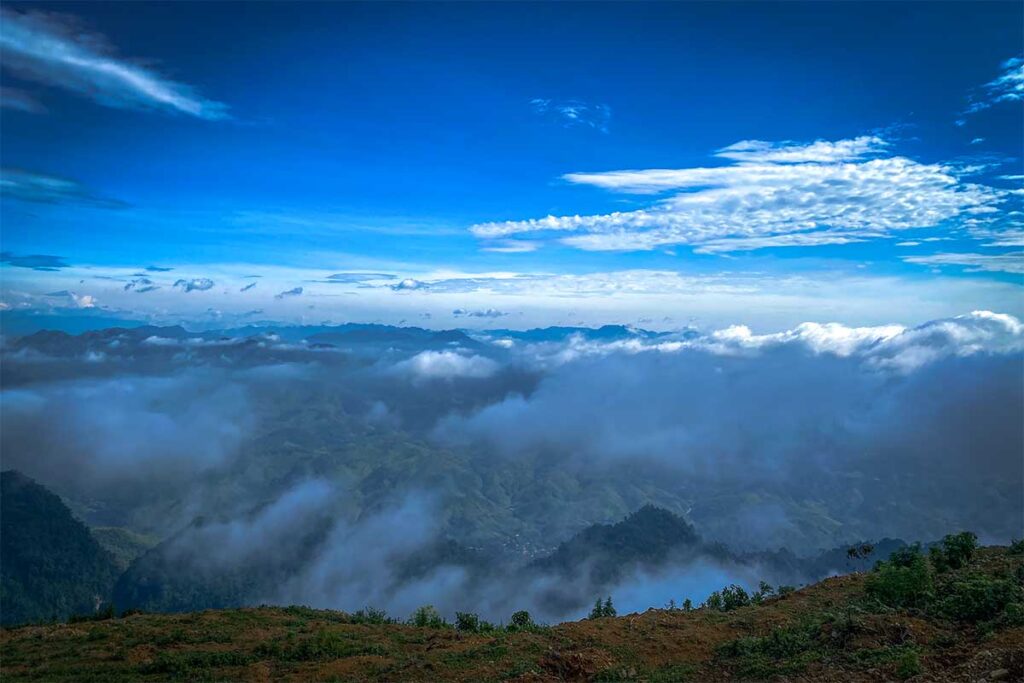
To Bo is a remote mountain known among adventurous Vietnamese travelers for cloud-hunting and wild camping. The views from the top are dramatic, especially at sunrise, but reaching it isn’t easy. The road is steep, rough, and better suited to experienced motorbike riders.
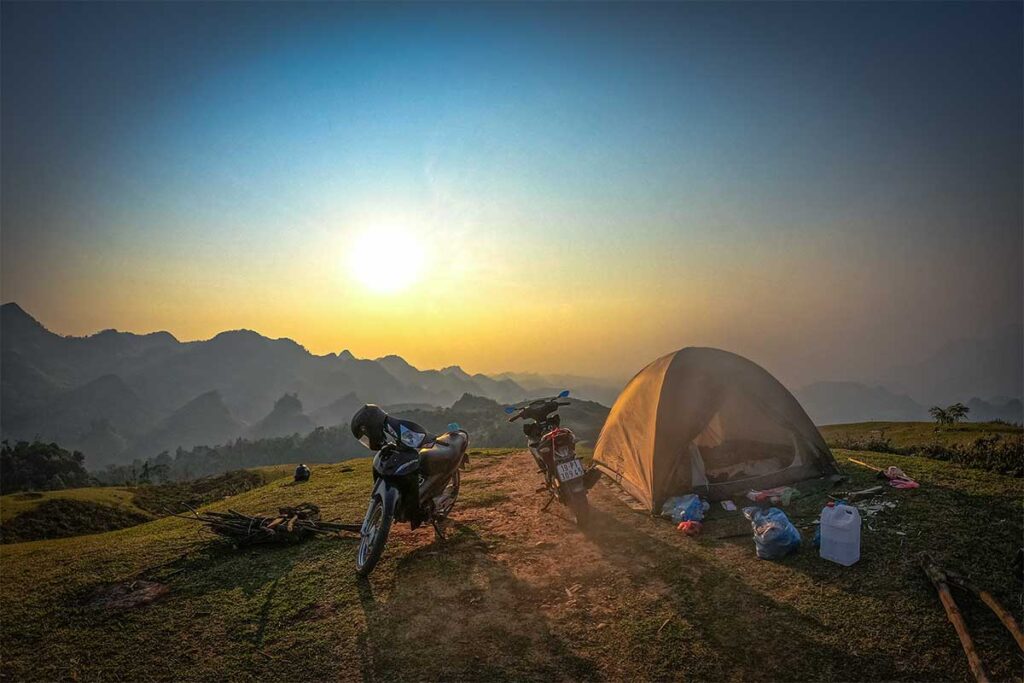
There are no official campsites or rentals — locals bring their own gear.
While it’s a noteworthy local destination, it’s not well-suited to most international tourists unless you’re an experienced off-road rider and come properly prepared. Still, it’s worth mentioning as part of Van Ho’s wild landscape.
7. Hua Tat Pine Forest
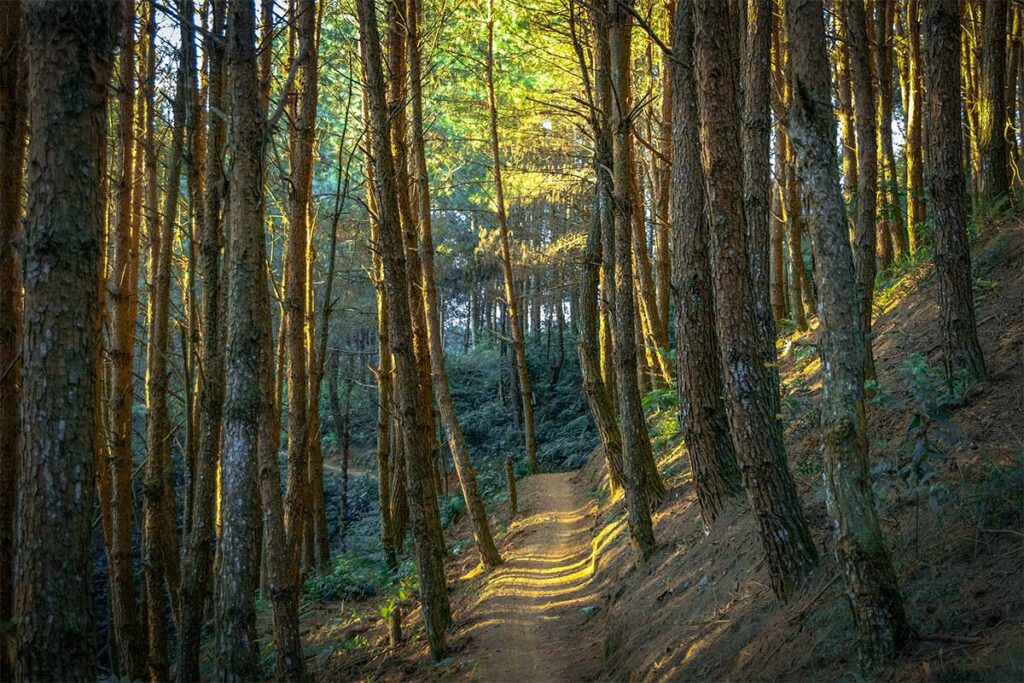
Just off the main highway between Mai Chau and Moc Chau, Hua Tat is a peaceful pine-covered hamlet with a cluster of homestays and cafés. The area is small but very photogenic, with cool air, pine trees, and a few viewpoints over the valley.
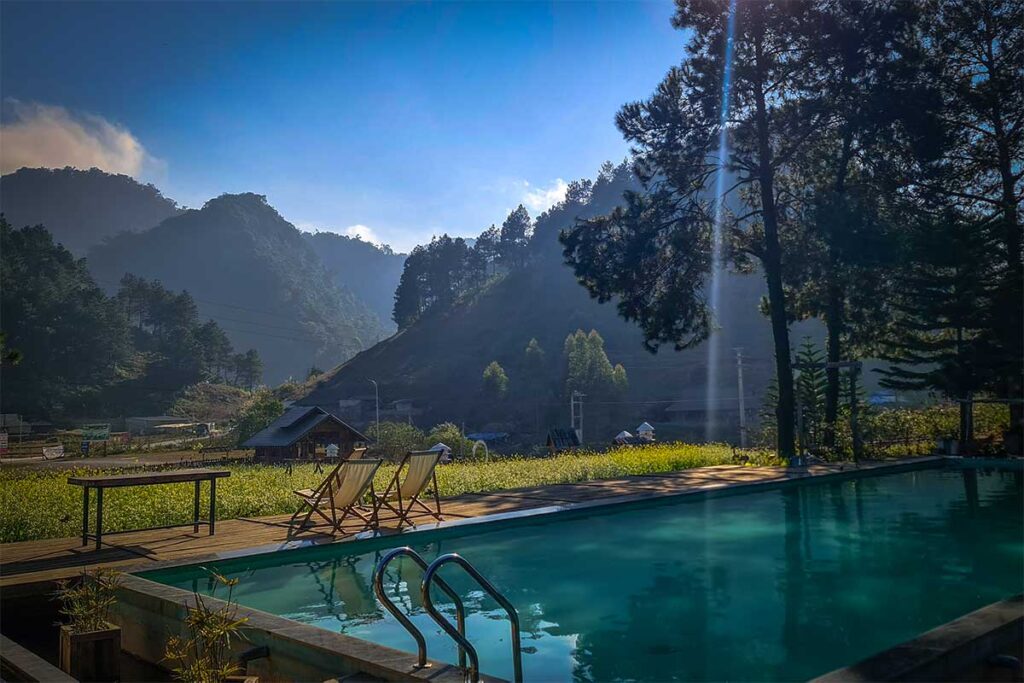
It’s a nice spot for a coffee break or even an overnight stay if you’re looking for something quiet and atmospheric. Prices can be slightly higher here due to the “Nordic-style” boutique vibe, but it’s a good soft landing spot within Van Ho District.
8. Scenic road from Moc Chau to Chieng Yen
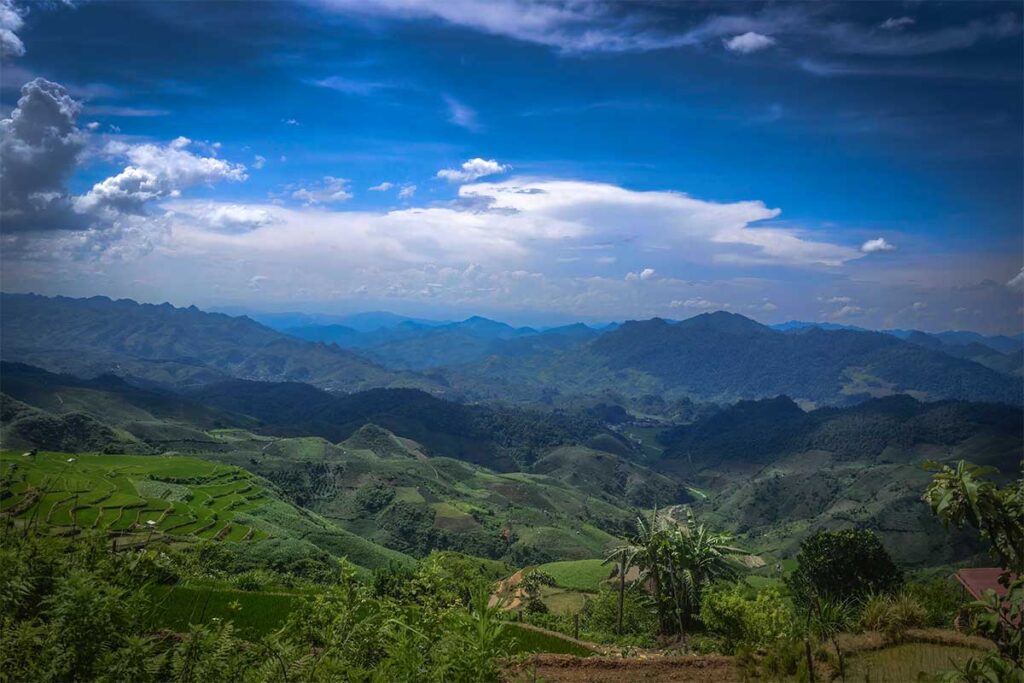
Instead of taking the main Highway 6, adventurous travelers can opt for the smaller parallel road connecting Moc Chau to Chieng Yen. It’s one of the most winding roads in northern Vietnam, with incredible views, tight turns, and a real sense of adventure.
The road is concrete and in decent condition, but it’s best tackled by motorbike. It’s not suitable for cars due to the narrow curves and steep gradients. For confident riders, this route is a highlight on its own — not just a way to get from A to B.
9. Stay in a local homestay

Staying in a homestay in Van Ho is less about convenience and more about experience. You’ll eat home-cooked meals, sleep in simple stilt houses, and be part of village life — even if just for a night. Most homestays are family-run, and though English is rarely spoken, the hospitality is warm.
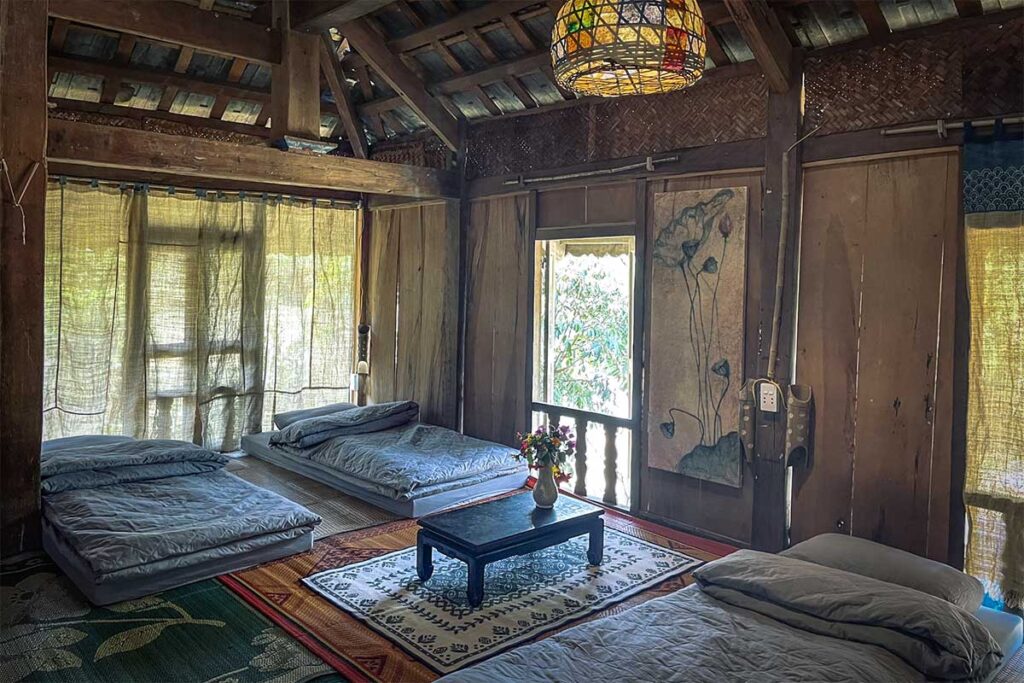
Don’t expect modern comforts: there’s often no hot water, heating, or reliable Wi-Fi. But for travelers looking to connect with northern Vietnam’s quieter side, a night here can be one of the most rewarding parts of your journey.
How to get to Van Ho (Including Chieng Yen)
Reaching Van Ho District is relatively easy thanks to its location along National Highway 6, which connects Hanoi with Mai Chau and Moc Chau. However, getting into the smaller villages and hidden corners like Chieng Yen requires a bit more effort and local navigation — especially if you’re traveling by car.
Via Mai Chau
Mai Chau is one of the most common entry points to Van Ho, especially if you’re coming from Hanoi. From Hanoi, you can reach Mai Chau in around 3.5–4 hours by private car, limousine van, or regular bus. Most routes follow Highway 6 through Hoa Binh and over the scenic Thung Khe Pass.
From Mai Chau, you continue along Highway 6 toward Moc Chau. After about 20–30 minutes, you’ll need to turn off onto smaller back roads that lead into the Chieng Yen area. The main route is paved and manageable, but once you venture deeper into the hills, some roads become narrow, steep, and less car-friendly. Motorbikes are the best way to explore this part of Van Ho, but a skilled local driver with a car can also manage.
Via Moc Chau
If you’re already in Moc Chau Town, Van Ho District lies just over an hour back toward Mai Chau. You can get to Moc Chau from Hanoi in about 4–5 hours by bus, limousine van, or private car.
From Moc Chau, motorbike travelers can follow the scenic old mountain road that runs parallel to Highway 6. This route winds through remote villages, pine forests, and open valley views — and eventually connects to Chieng Yen. It’s one of the most beautiful drives in the region, but only recommended for confident riders.
If you’re traveling by car, it’s better to stick to the main Highway 6, then branch off closer to your destination via more accessible roads.
From Hanoi directly
For the most straightforward route, you can travel from Hanoi directly to Van Ho via Highway 6. There are frequent limousine vans and buses departing from major stations like My Dinh or Giap Bat, heading toward Moc Chau. You can ask to be dropped off near Hua Tat or Long Luong, two key areas within Van Ho District.
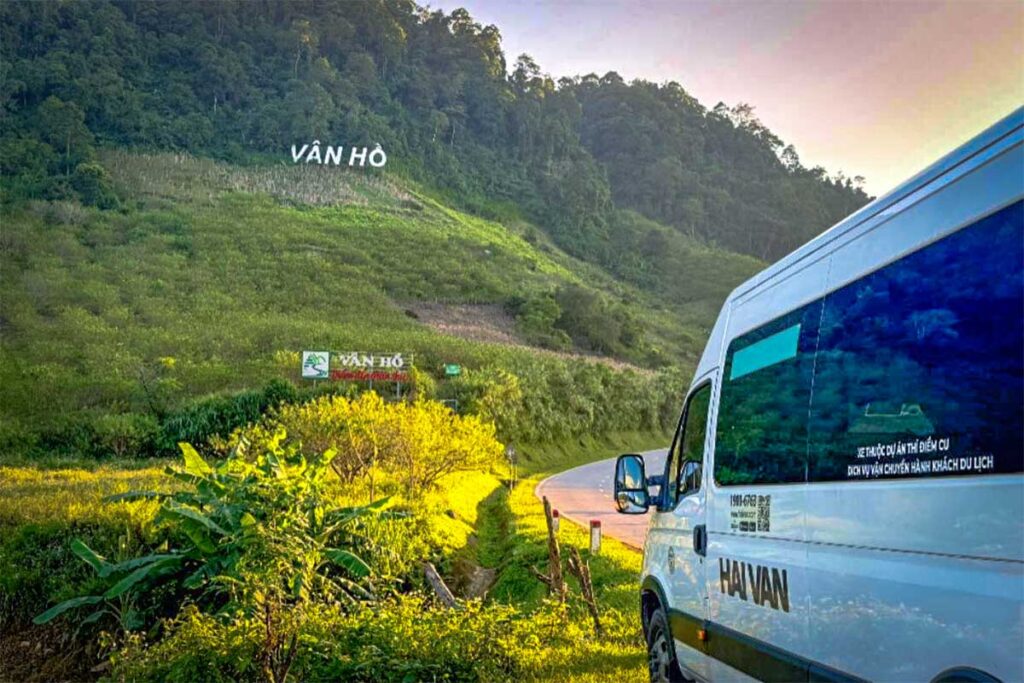
Alternatively, a private car with driver gives you more flexibility — especially if you want to explore harder-to-reach villages like Chieng Yen or make stops along the way. Travel time from Hanoi to Van Ho is around 4 hours, depending on road conditions and traffic.
Rent a car with driver to reach Van Ho
Want a comfortable and flexible ride to Van Ho or Chieng Yen? Book a private car with driver and enjoy scenic stops along the way — no need to worry about buses or transfers.
Button: Rent a car with driver
Best time to visit Van Ho
Van Ho District has a cool mountain climate year-round, but the experience changes with the seasons. When to go depends on what you want to see and do.
- Spring (March–May): This is the end of the dry season, with mild temperatures and blooming flowers across the hills. It’s a great time for walking and exploring villages, but waterfalls like Tat Nang will have the lowest flow of the year. The scenery is fresh but not at its greenest yet.
- Autumn (September–November): One of the best overall times to visit, with cool air, drying skies, and strong water flow in the streams and waterfalls after the rainy season. Rice fields turn golden, and it’s ideal for both sightseeing and cloud-hunting.
- Summer (June–August): Hot, humid, and often rainy — but great for swimming in streams and soaking in hot springs. Rain tends to fall in short bursts, and this is when the landscape is at its most lush and vibrant.
- Winter (December–February): Cool and dry, with daytime sun and chilly nights. Water levels in streams start to drop, but waterfalls still flow. It’s a quiet time to visit, perfect for relaxed exploration, photography, and village stays — just pack warm clothes.
Travel tips for visiting Van Ho
Van Ho offers a raw and authentic experience, but it comes with some logistical challenges. These tips will help you prepare for a smoother trip.
Bring what you veed
Shops are few and far between in the rural parts of Van Ho. Make sure to bring enough cash, basic snacks, any medicine you might need, and a power bank for charging — especially if you’re staying overnight in a remote village.
Road conditions
Some roads, especially those leading to Chieng Yen and To Bo Peak, are steep, narrow, or unpaved. Motorbikes are the best way to explore, but only for confident riders. Fog is common in the early morning and late afternoon, so drive cautiously and avoid risky stretches in low visibility.
Expect simple facilities
You won’t find any hotels or resorts here. Accommodation is mostly in family-run homestays, often without hot water, heating, or Wi-Fi. English is rarely spoken, so patience and flexibility go a long way.
Stay with a Host Family
Homestays offer more than just a place to sleep — they’re an experience in themselves. Expect home-cooked meals, often using locally grown ingredients. If you have dietary restrictions, let your host know in advance, as options may be limited.
Avoid night driving
The roads in Van Ho are winding, poorly lit, and remote, making them risky to navigate after dark. It’s best to travel during daylight, both for safety and to enjoy the views.
Navigation
Google Maps works, but some roads and locations are unmarked or mapped incorrectly. Download offline maps, and don’t hesitate to ask locals for directions. Keep in mind that many people speak only Vietnamese or ethnic minority languages, so hand gestures or translation apps can help.
